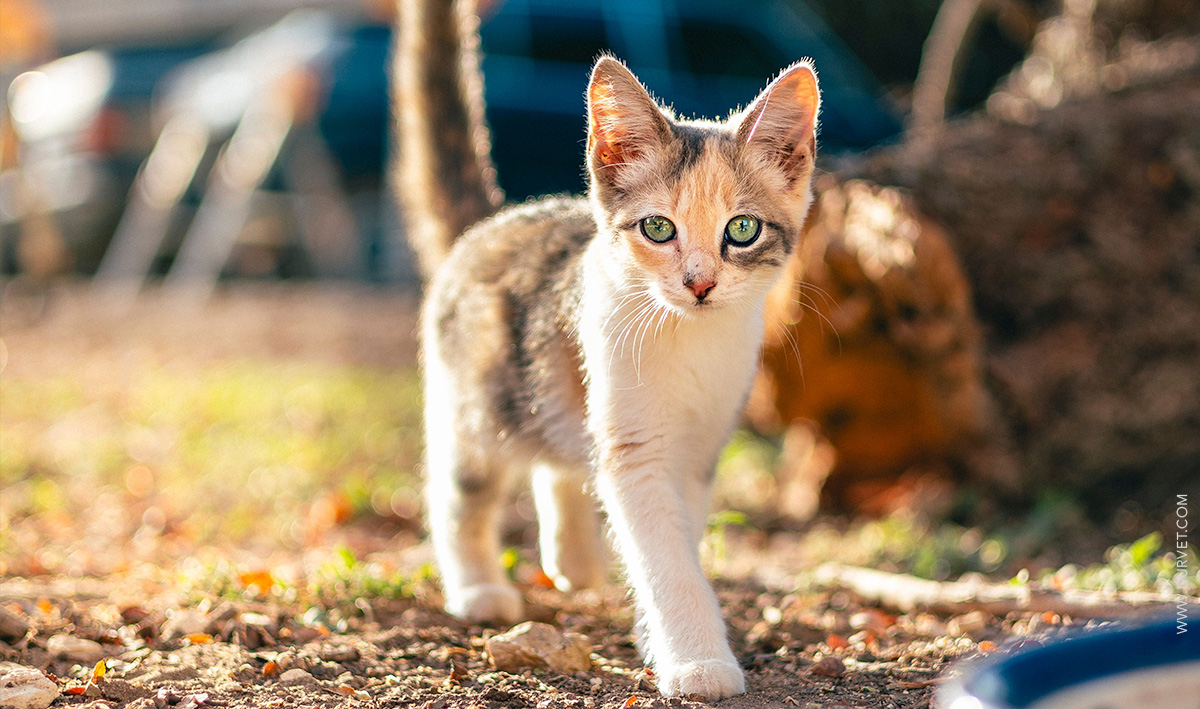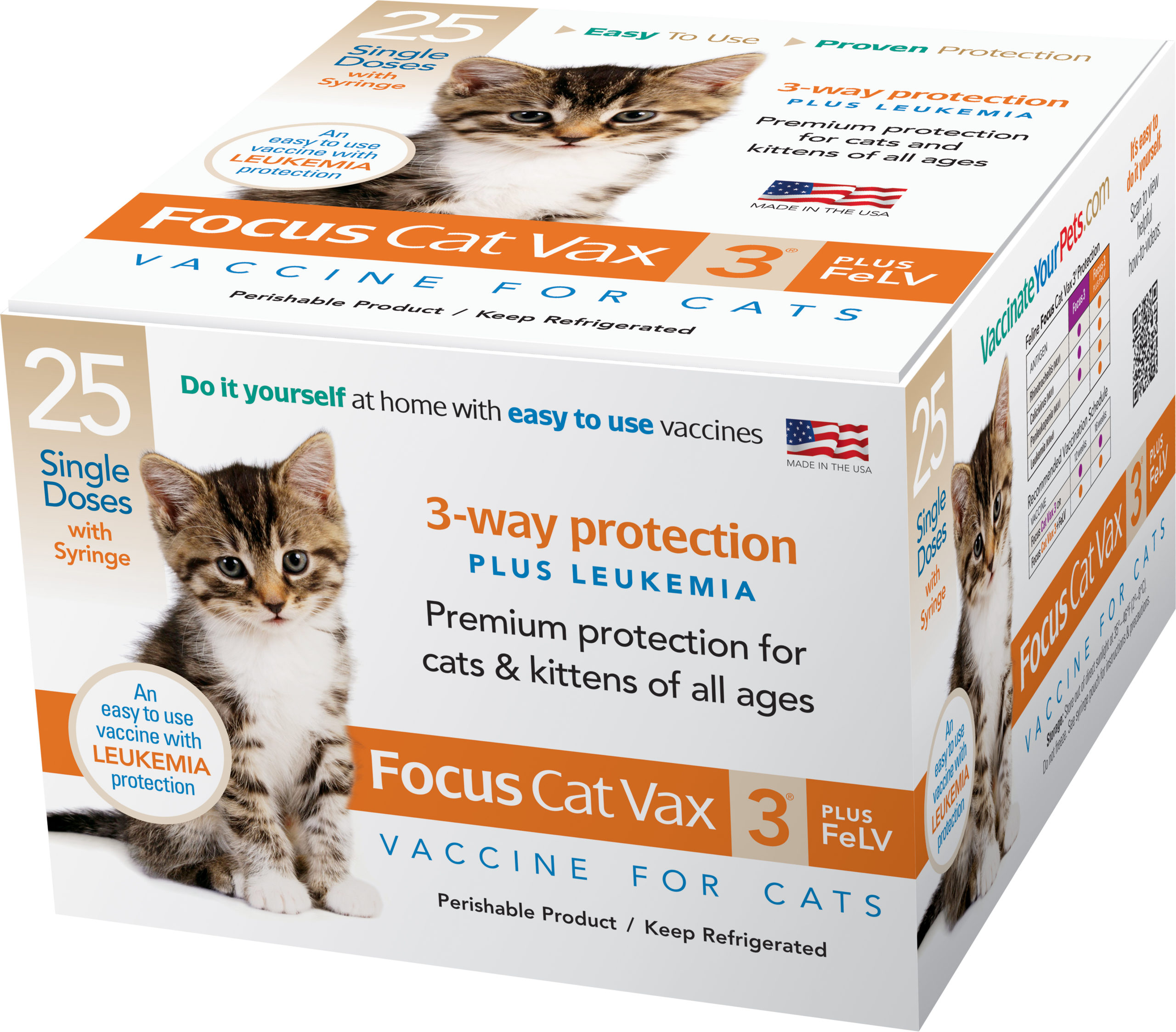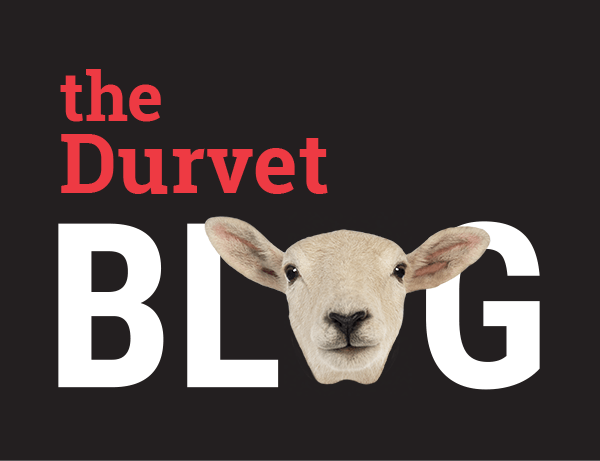
Feline Leukemia Virus (FeLV) infects cats and causes a disease called Feline Leukemia.
FeLV does not cause one certain type of disease, instead this virus causes suppression of the immune system, suppression of the bone marrow, certain types of cancers in cats, spontaneous abortions, and fading kitten syndrome where entire litters can be lost.
Viremic FeLV-infected cats shed the virus through various body fluids, including saliva, feces, milk, and urine. Transmission occurs primarily through prolonged close contact among cats, with unneutered roaming males being at the highest risk. The virus is most commonly spread through saliva during grooming, playing, and the sharing of food or water bowls and litter boxes. It can also be transmitted through fighting behaviors. Mothers can pass the virus to their kittens either transplacentally or through their milk after birth. If infection occurs in utero, it may lead to fetal resorption, abortion, or neonatal death. However, up to 20% of infected kittens may survive the neonatal period and become progressively infected adults.
Long term environmental contamination is not a concern, as the virus only remains viable in the environment a few minutes and is easily inactivated by household disinfectants. Humans are not susceptible to this virus, so zoonotic infection is not a concern.
CLINICAL DISEASE IN CATS
Many infected cats do not show signs (asymptomatic) of infection outwardly; however, they can still pass the infection on to other cats. Infected cats that do show signs of illness may have weight loss, weakness, fever, dehydration, nasal congestion and discharge, diarrhea, red eyes (conjunctivitis), sores in the mouth, enlarged lymph nodes, and/or abscesses under the skin. Anemia (decreased number of red blood cells) in cats is commonly caused by FeLV. Since this virus also infects white blood cells, it often weakens the immune system. Consequently, FeLV-infected cats are susceptible to secondary infections from other organisms such as bacteria, viruses, protozoa, and fungi, which lead to other symptoms, including respiratory and intestinal problems. Common cancers associated with FeLV include leukemia, lymphoma, fibrosarcoma, and osteochondroma. Neurologic issues may arise when lymphoma or the virus infiltrates the brain or the spinal cord. FeLV is also associated with various blood disorders caused by bone marrow dysfunction, such as anemia and low platelet counts. Additionally, the virus suppresses the immune system and prevents the cat from fighting any infection that a healthy cat would be able to combat. The symptoms of FeLV infection are often nonspecific, and no single symptom is solely indicative of the virus.
PREVENTION
Since there is no medication that can eliminate Feline Leukemia Virus once a cat is infected, prevention of viral exposure through environmental control (such as maintaining an indoor-only lifestyle and avoiding contact with cats of unknown or positive FeLV status) and vaccination become crucial.
Before beginning the vaccine series, the FeLV status should be confirmed for each individual cat. If a cat is already infected with FeLV, a vaccine will be ineffective, and the animal may still potentially be able to transmit the virus to other cats.
FeLV positive cats can live healthy lives in homes where they are inside only and have no exposure to uninfected (FeLV negative) house mates. When adopting a new cat to add to a home, it is important to make sure they are FeLV negative so as not to infect their new house mates.
VACCINATION SCHEDULE
The American Animal Hospital Association (AAHA) considers FeLV vaccine (either recombinant or inactivated) a “core vaccine.” Kittens less than 16 weeks of age are most likely to develop serious progressive infection after exposure. Thus, each FeLV negative cat should receive 2 doses of vaccine 3-4 weeks apart, starting as early as 8 weeks of age.
Focus Cat Vax plus 3® PLUS FeLV is a premium 3-way vaccine with added Leukemia protection for cats and kittens of all ages.
RESOURCES & REFERENCES Cohn, LA, Cote’, E (2020) Cote’s Clinical Veterinary Advisor: Dogs and Cats (Fourth Ed., pp. 329-331). Elsevier, Inc. • Sykes, JE. (2023) Greene’s Infectious Diseases of the Dog and Cat (Fifth Ed., pp. 382-413). Elsevier, Inc. • Stone AES, Brummet GO, Carozza EM, Kass PH, Petersen EP, Sykes J, Westman ME. 2020 AAHA/AAFP Feline Vaccination Guidelines. Journal of Feline Medicine and Surgery (2020) 22, 813-830. doi:10.1177/1098612X20941784 • Scherk MA, Ford RB, Gaskell RM, Hartmann K, Hurley KF, Lappin MR, Levy JK, Little SE, Nordone SK, Sparkes AH. Disease Information Fact Sheet. Feline Leukemia Virus. Journal of Feline Medicine and Surgery (2013) 15, Supplementary File to Volume 15, pp 785-808

 BACK TO MAIN BLOG
BACK TO MAIN BLOG 

Comment